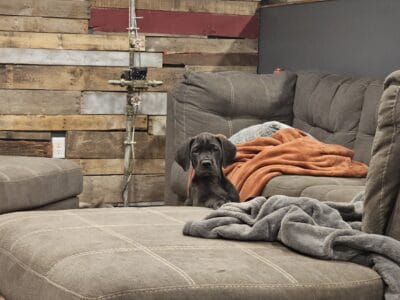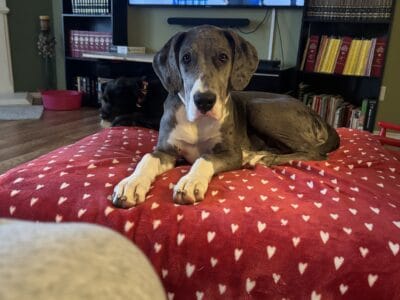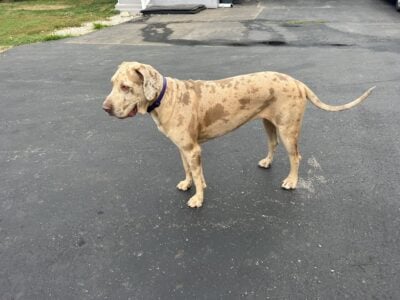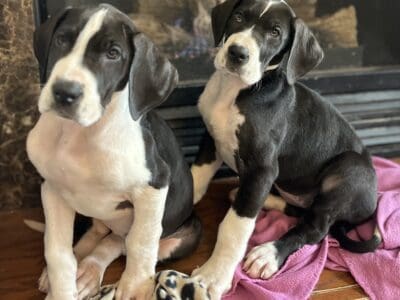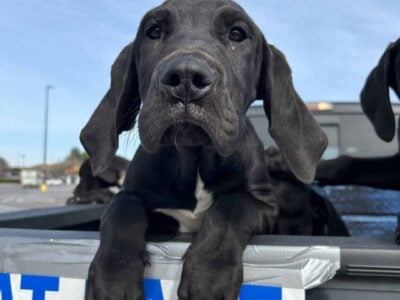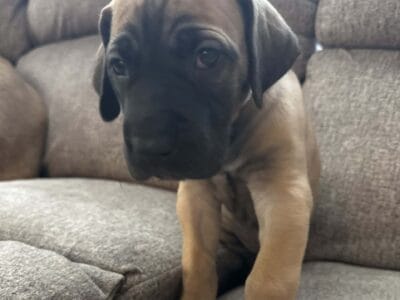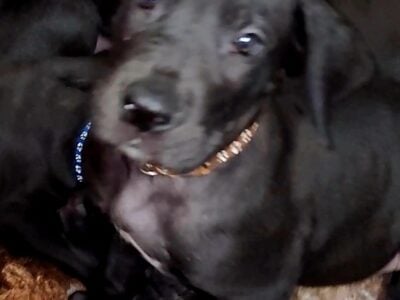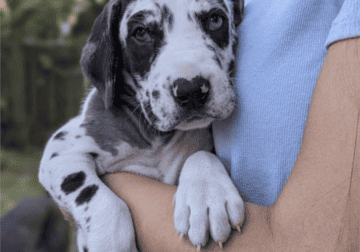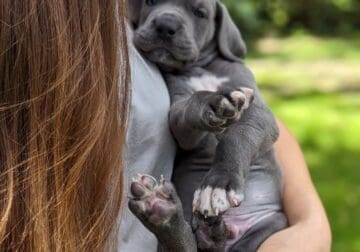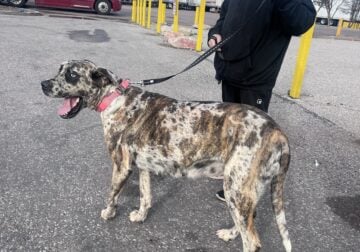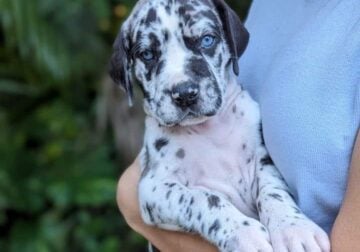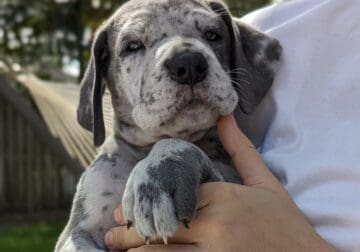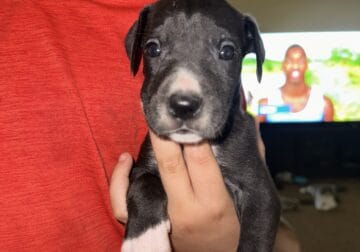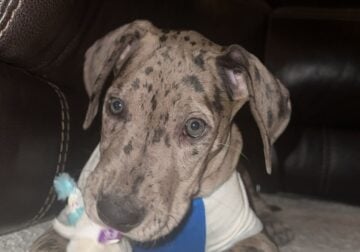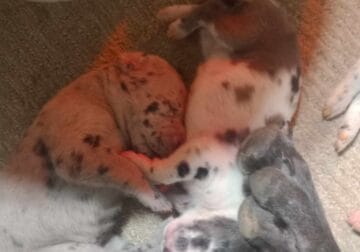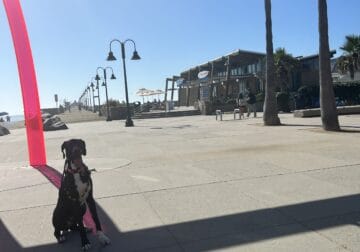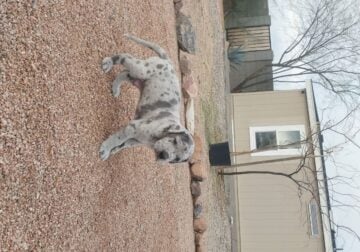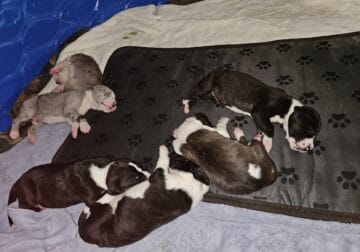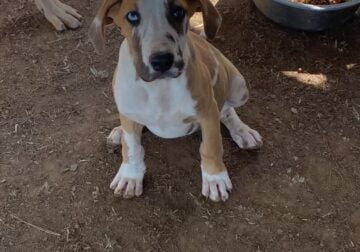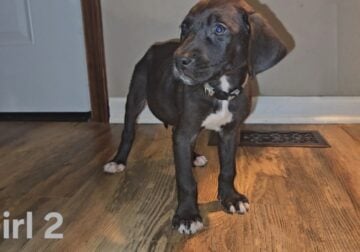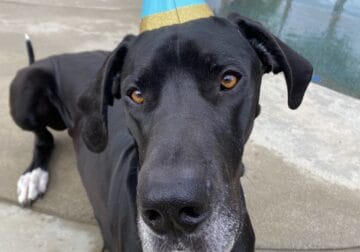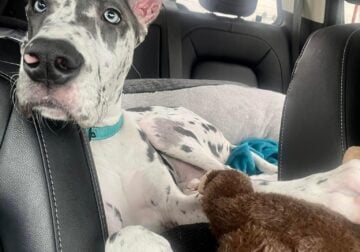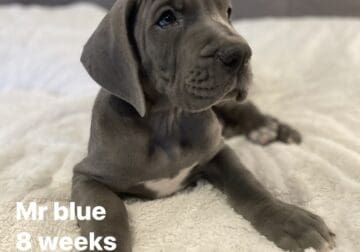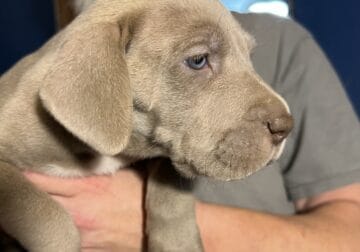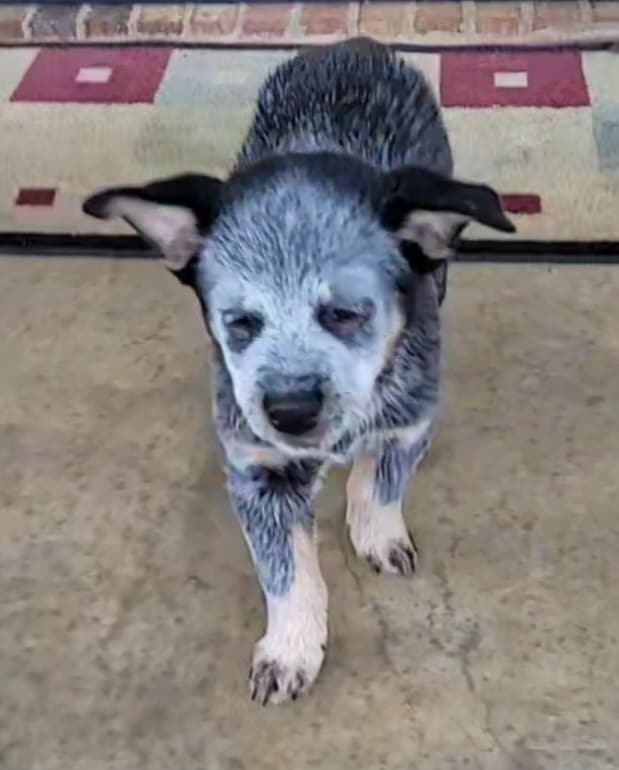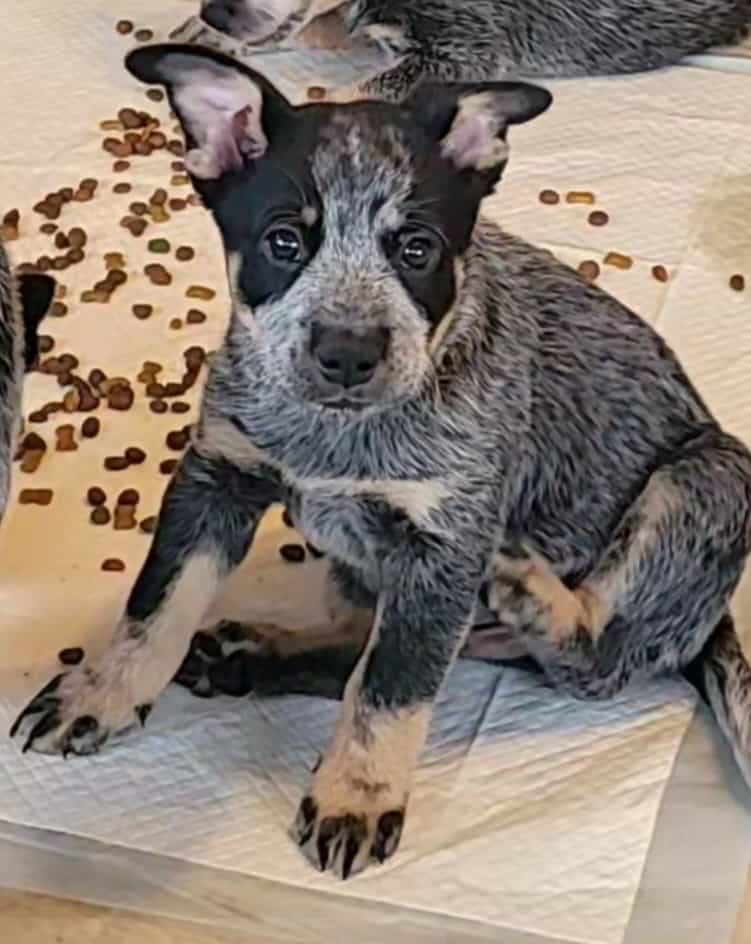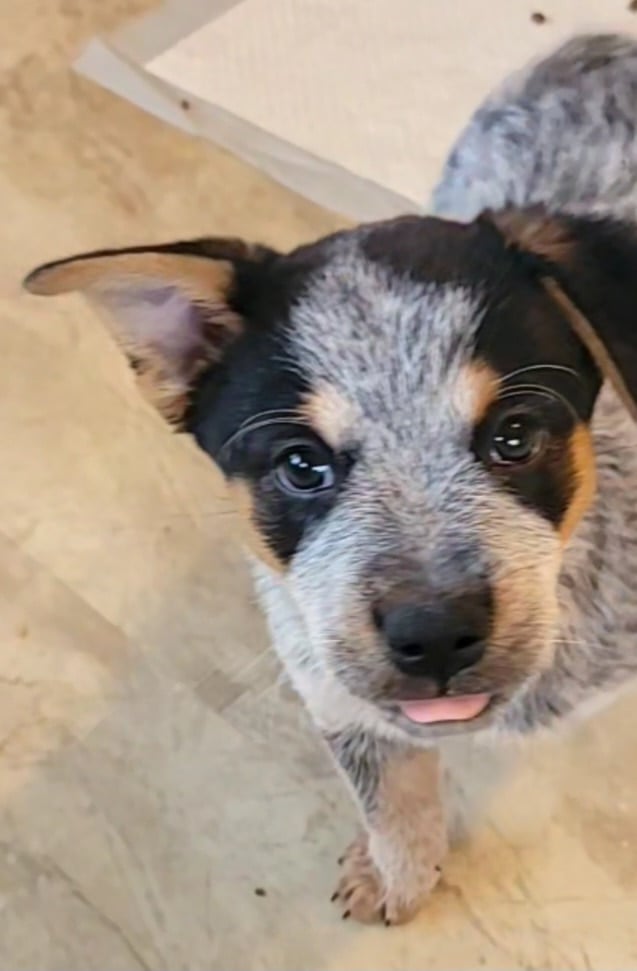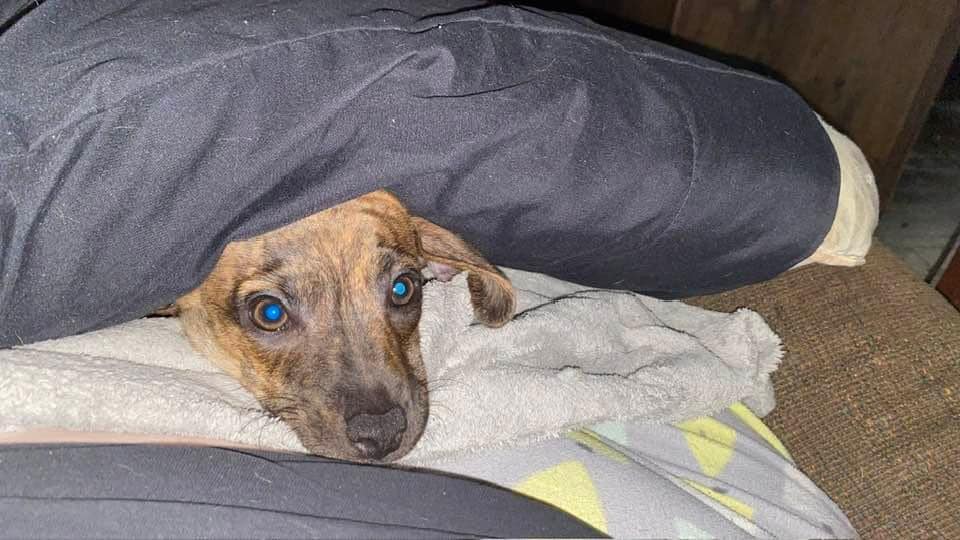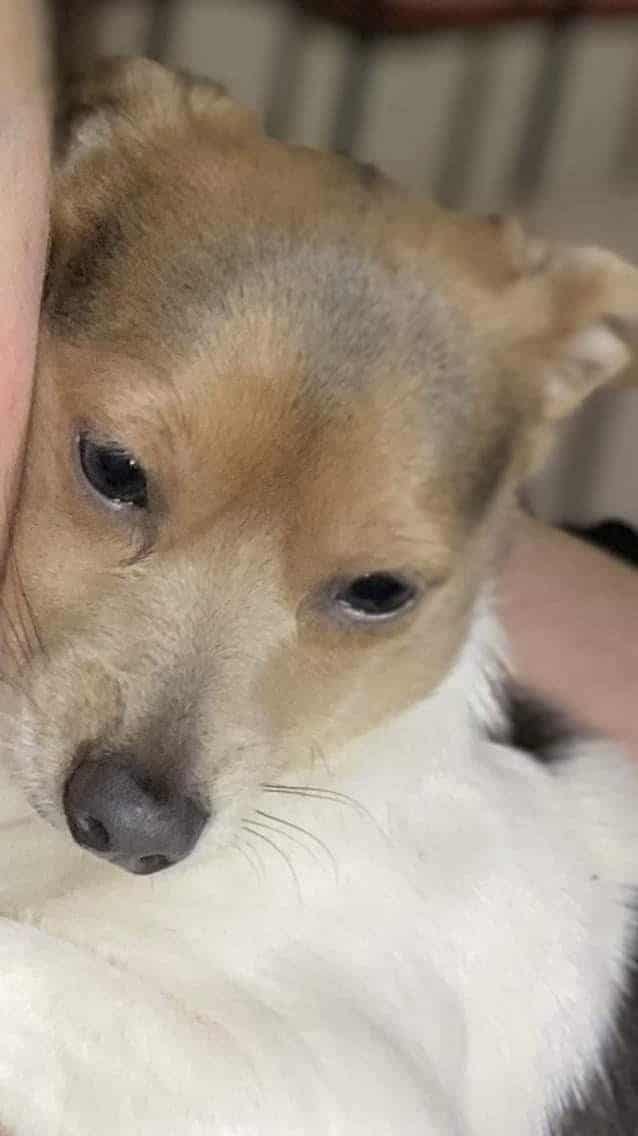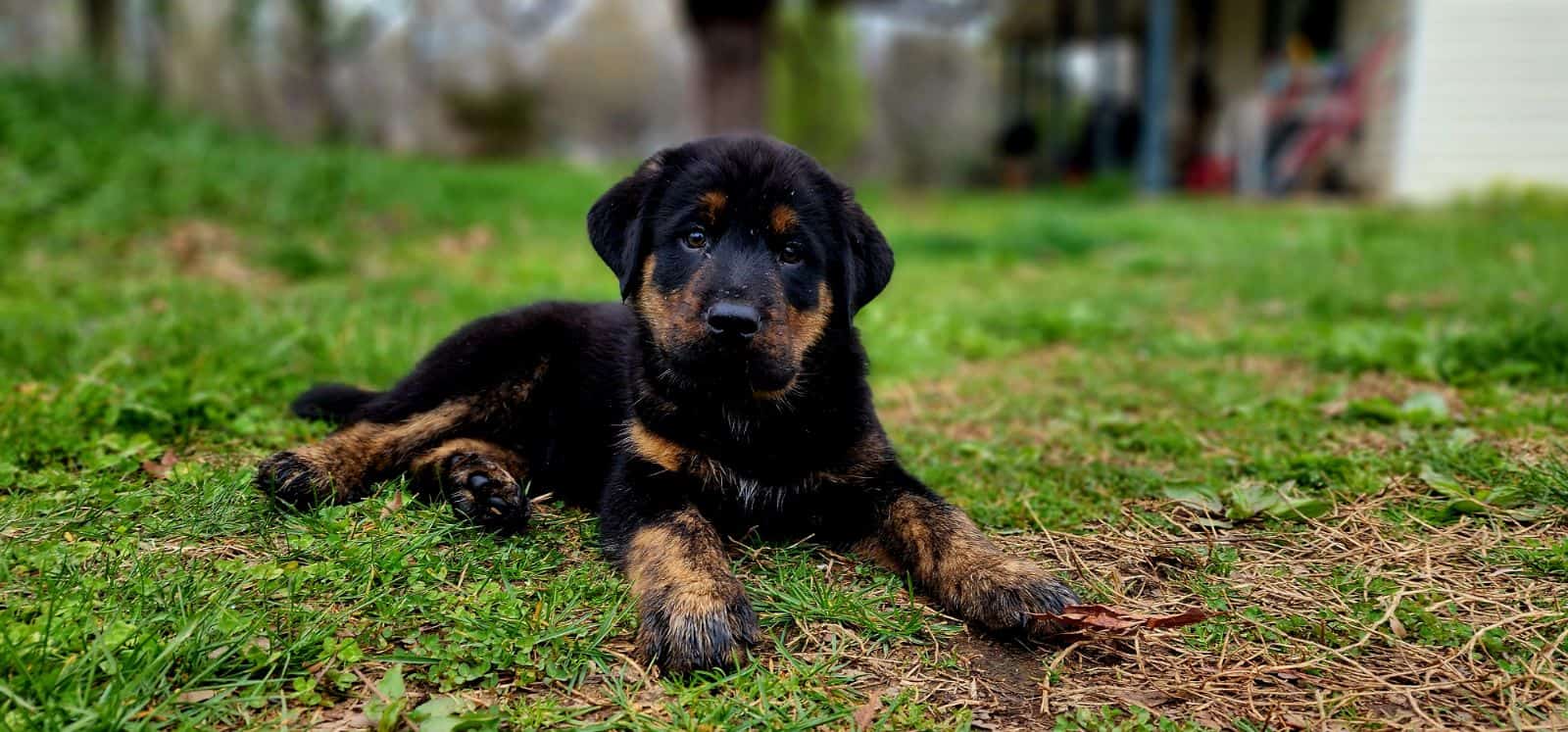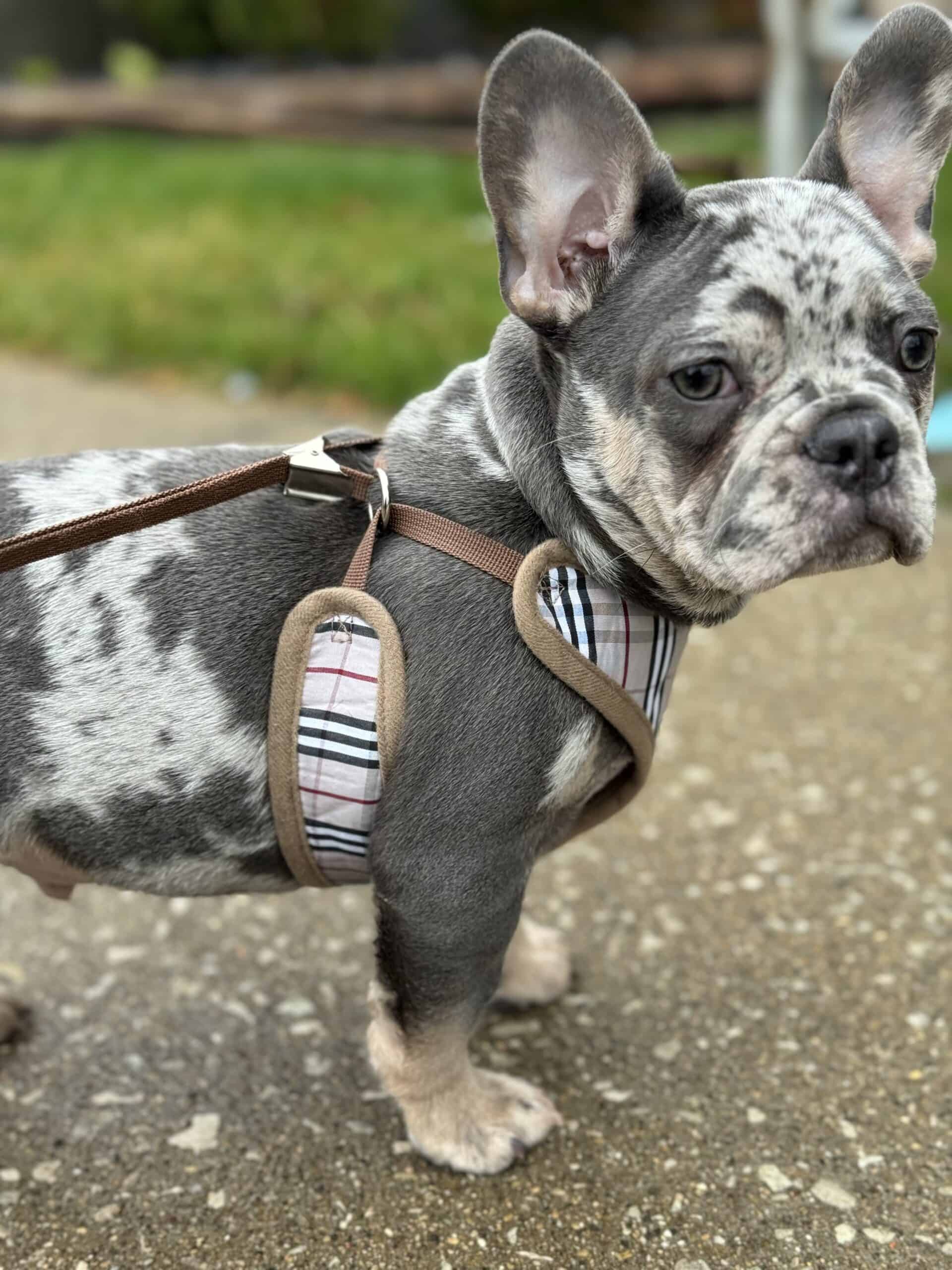Popular Filters:
Great Dane Puppies for Sale $200
Great Dane Puppies for Sale under $500 Dollars
How to Acquire Magnificence: Great Dane Puppies for Sale
Not many can witness a full-grown Great Dane for sale without feeling admiration and awe. Not only is her size impressive, but a Dane can simultaneously move with elegance, obliterate an entire room, and try to climb onto your lap. With a ferocious background, Great Danes are surprisingly sensitive. The Great Dane is a giant-breed dog that can suit a variety of personalities from those who enjoy lounging with their dogs all day to youths who like a playmate with which to roughhouse.
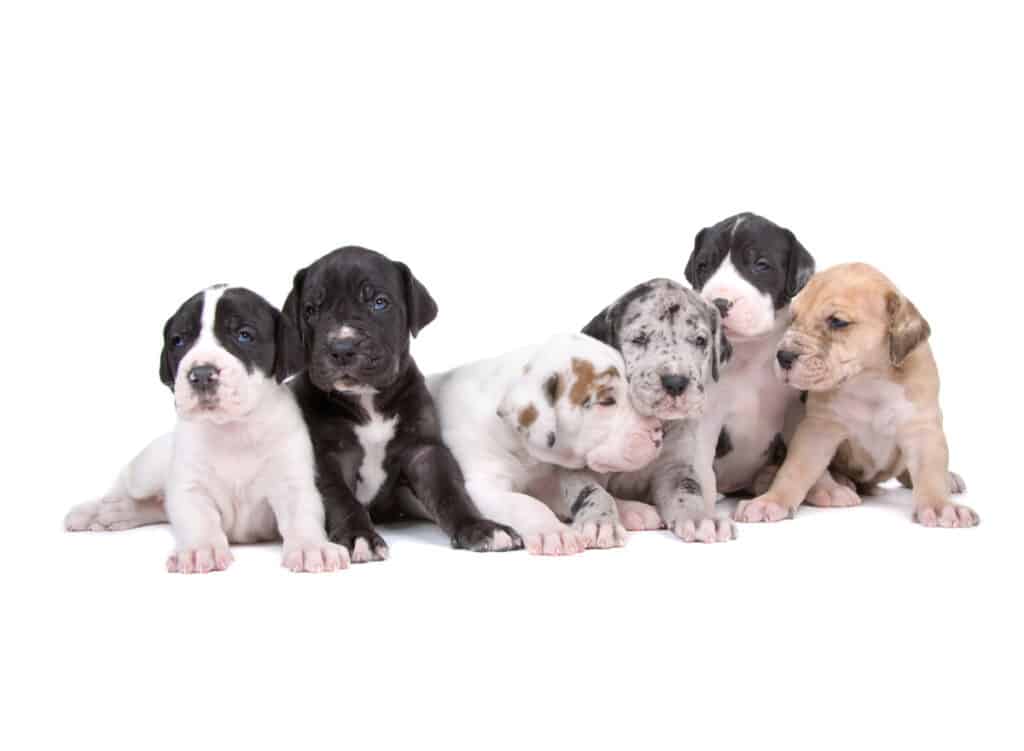
Overview of Great Dane for Sale
History: Not Danish
Danes are indeed great but not truly from Denmark. The Great Dane has a complex history interwoven with several other breeds, but it all began with German nobles. Germany, along with many of its fellow European countries, engaged in importing and breeding hybrid dogs from England in the 1500s. These were crosses between Irish Wolfhounds and English Mastiffs, and hunters coveted them for their long-legged swiftness and ferocity. The dogs could effectively chase down bears, deer, and wild boars and hold them at bay. Germans called the hounds Englischer Hund (English dog or English Molossoid), and noble hunters eventually developed a wild boar specialist. They used Greek imports like the Molossian Hound in the 1700s to further enhance the dogs’ proficiency against the porcine species. By the 1800s, these boar hunting dogs were also guarding estates at night and accompanying carriages by day.
AKC
Germany took steps to establish the official Great Dane breed and changed the name to Deutsche Dogge in 1878. The Great Dane had several names in the 1800s, some of which still stand in 2021 such as German Mastiff, German Dog, and German Boarhound. Like the term Alsatian, Great Dane developed as anti-German sentiment deepened, but no one knows why Denmark was chosen. Nevertheless, both the French and English referred to the German Boarhound as “Big Danish.” The Great Dane joined the AKC in 1887, having arrived in the US 10 years earlier. To produce healthier Great Dane puppies for sale, the AKC recommends breed-specific testing and certificates. The four pertinent systems are the heart, hips, thyroid gland, and eyes.
Temperament
The Great Dane has developed from a fierce hunter into an amiable family companion. Danes are affectionate, joyful, and fearless. They tend to be patient with kids and get along well with other dogs. They make great playmates because they seem to know how to temper their strength. Most Danes retain their instincts to guard the home. Their presence alone is sufficient to deter would-be intruders, but Great Danes have a bite to back up their formidable barks. Friendly dogs, Danes only snap as the last resort. There are weak family lines among Great Dane puppies for sale that have produced fear-biters and aggressive dogs. However, the breed standard emphasizes a social and steady dog without shyness. Danes do not do well on their own for more than a few hours at a stretch as they form strong bonds with their owners.
Physical Traits
Great Danes are unique among Mastiff types, still exhibiting sighthound characteristics. Although the body is square, the head is rectangular without any of the block shape or bluntness of other Molossoid breeds. It is angular and the facial features are chiseled. Great Danes have medium-shaped deep eyes and high-set ears that fold forward. Owners in America often have their Danes’ ears cropped long, although originally, they were meant to look like Bull Terrier’s ears. The Great Dane’s neck is long, powerful, and arched, the back short and level, and the fore and hindquarters broad and strong. Danes have a deep chest and a pronounced underline tuck-up but not as extreme as sighthounds like the Greyhound. A Dane’s legs are long but not spindly. The croup slopes slightly, and the tail flows naturally and rather low from the spine. Your dog’s tail may have a slight curve when he is excited. Despite their magnificent size, a Great Dane presents an image of balance and grace. The gait is efficient and powerful with a long-reaching stride.
Size
Great Danes are among the largest of any dog, the breed standard stating a preference for the tallest individuals possible. In conformation shows, height has the same priority as general appearance. Males should be at least 30 inches tall at the shoulders although judges prefer 32 inches and above. The minimum shoulder height for females is 28 inches, but the preference is for at least an additional two inches.
Colors
Where many breeds have a range of shades they may exhibit, Great Dane colors are specific.
Fawn
Fawn in Danes is yellow gold. The deeper the shade the better, according to the breed standard. Fawn dogs should have black eye rims and a black facial mask. Black markings are also acceptable on the tip of the tail and ears, but fanciers do not prefer white anywhere, even on the toes.
Black
Black Great Danes are striking with their glossy coats. Some black dogs may have a white marking on the chest and toes. However, solid black Great Danes with no white markings are the preference.
Blue
Seen in several breeds, blue is a genetically black Great Dane with a dilution gene that partially masks the expression of dark pigment. Genetically black coats will have a light gray to charcoal appearance. The acceptable shade for a Great Dane is steel blue. As with every solid color except merle, white markings are not desirable.
Harlequin
A harlequin Great Dane is white with black in torn patches throughout the body. Sometimes you will see merle or fawn associated with some or all of the black patches. Blanket patterns, whereby black areas merge and look like a mantle or saddle, are not permissible for a harlequin.
Mantle
Unlike harlequin Great Danes, mantles will show a blanket pattern of black on a white base color. The pattern was called Boston until the 1900s after the Irish spotting of the Boston Terrier, and it is terribly similar. Fawn or merle can be associated with any of the black areas, especially on the face. However, the preference is for the purity of the black coloring in a mantle Dane.
Brindle
Brindle is a fawn base color with black bands that resemble stripes. On Great Danes, the brindling should be uniform with heavily striped and dark sparsely-striped dogs deemed undesirable.
Merle
Merle Great Danes have a gray merle base color with black torn patches throughout the body. The pattern should remind you of a harlequin Great Dane. Merle dogs can be solid or mantle. Mantle merle Great Danes have a merle blanket in place of black on a white base color. Picture a mantle Great Dane and replace all the black with merle. Solid merle Great Danes are allowed a white patch on the toes and chest without penalty.
The American Kennel Club does not recognize any colors other than those listed above. Harlequin and merle Great Danes are the only colors where blue eyes are acceptable. Both eyes may be blue, or you can see a mismatch, but dark is still preferable. Blue Danes, because of the dilution factor, will have light-colored eyes. Merlequin is a white dog with only torn merle patches. It is a disqualified color.
Care
Healthy Great Danes are medium- to high-maintenance dogs. Their tremendous size and strength make them challenging to train, and they have special feeding needs. Novice owners, especially, need to take into consideration what it will take to manage a giant breed when looking over a litter of gangly, endearing Great Dane puppies for sale.
Grooming
A Great Dane has a short, single-layer coat. You can use a pin brush, but a horsehair brush with soft bristles may be more comfortable for your dog’s sensitive skin. It needs to be stiff enough to remove dead skin and other debris. Despite their thin fur, Danes shed a fair amount the entire year. Their body mass may keep them warm if the temperature is above freezing, but their coats will not offer much protection. You should brush your Dane twice weekly to maintain blood circulation through the skin. Bathe every two to three months with a mild shampoo. Allergy sufferers may require more frequent and medicated baths. You should also brush your dog’s teeth twice weekly. Introduce the routine at an early age. Danes have hard dark nails, so it may be best to allow a professional to trim them or use a Dremel tool every couple of months.
Exercise
Your Great Dane needs about 45 to 60 minutes of exercise every day. True to their sighthound heritage, Danes do not have much subcutaneous fat and cannot tolerate extremes in hot or cold weather. Keep this in mind when trying to set time aside for exercising your pet. Make sure to provide mental stimulation as well as a short period of rigorous activities. Great Danes are smart and do well with interactive games like Frisbee or scavenger hunts. You can also try occasional adventures such as hiking. You may think puppies can handle more exercise than adults, but you must limit them until their fragile growth plates close. A Great Dane may require two years to fully mature. Until then, do not push your puppy and limit jumping and long-distance running. Focus more on training and socialization.
Feeding
Great Danes eat 2000 to 3500 calories per day, or five to eight cups depending on the food. Adolescent puppies can eat nine to fifteen cups. Gender, age, health, and activity levels play a role in how much your dog needs to eat. You should divide your dog’s daily food portions into at least three meals, even as adults, because of the high risk of bloat. Great Danes, like other breeds, need about 23% or more of their diet to come from protein and 12% from fat. Proteins should be animal in origin. Fats are more bioavailable to dogs if they also come from meat sources, but most canids do well with high-quality plant oils from coconuts or flaxseeds among others.
Training
Great Danes are average in working intelligence, on par with Boxers and Scottish Deerhounds. As catch dogs, they performed much of their job before humans got to the scene. Therefore, Great Danes have a lot of independent thinking and decision making, and to many owners, a stubborn and bullying personality. Great Danes need a self-assured trainer because of their size and willfulness. They also require repetition and positive reinforcement.
